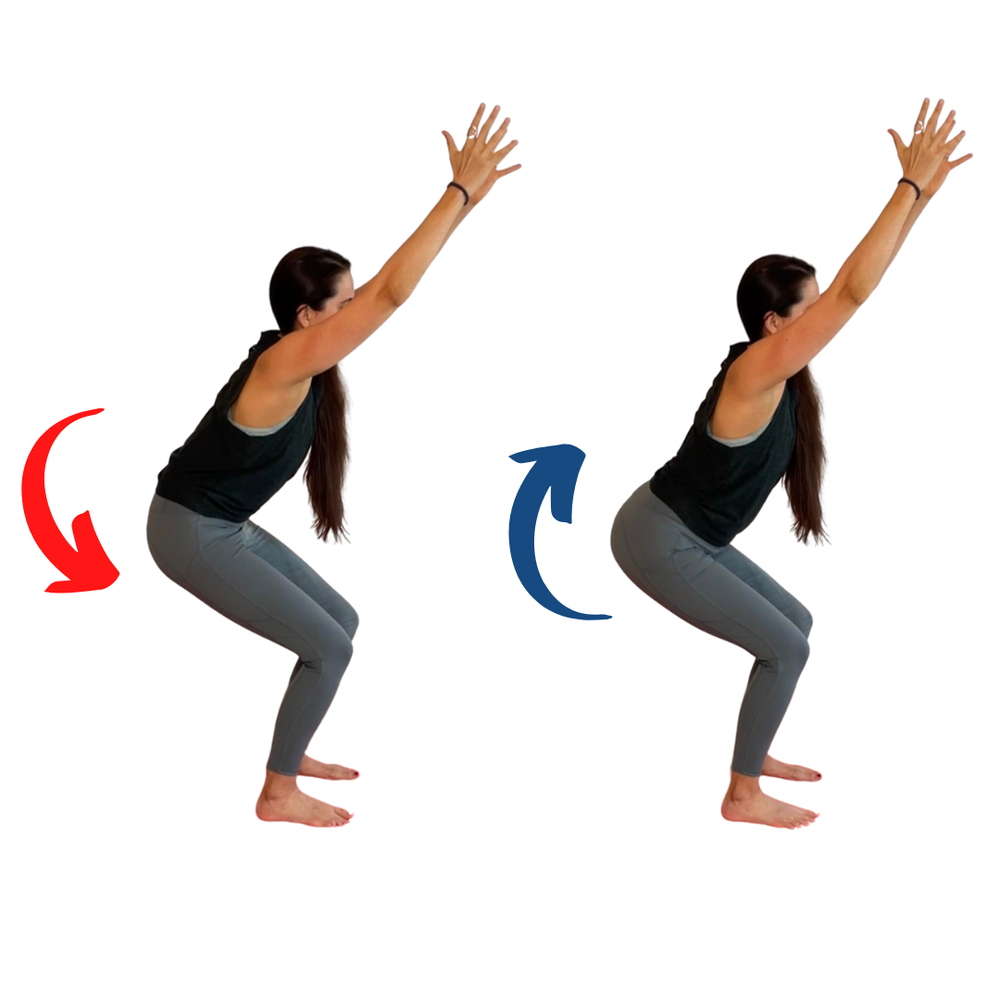
What Should We Do With Our Tailbone in Chair Pose?
Before we recorded our most recent podcast episode about chair pose (a.k.a. utkatasana), we put out a call to my social media audience for questions.
One of the most common questions we received was, “Should we tuck or untuck our tailbone in chair pose?”
We discuss this good question – along with a *ton* of other alignment questions about chair pose – in the newest episode of the Yoga Meets Movement Science podcast!
For now, let’s take a look at the specific question of tailbone position:
In chair pose, it’s common to hear the cue to “untuck your tailbone” (which is an anterior tilt of the pelvis in anatomy speak).
The reason for this instruction is generally to “protect the spine” by reducing lumbar flexion.

At the same time, though, another common cue we hear in chair pose is to “tuck the tailbone” (which is a posterior tilt of the pelvis in anatomy speak).
The reason for this instruction is generally to “protect the spine” by engaging the core.

In other words, we often hear two opposite cues (“tuck” the tailbone and “untuck” the tailbone) in the same yoga pose (chair pose) for the same reason (to protect the spine).
How does this compute??
As it turns out, despite yoga teachers’ well-meaning concerns about the safety of the spine in chair pose, when it comes to biomechanics and load, the spine is not actually exposed to a significant risk of injury in this pose.

In fact, even in contexts that do involve heavier loads like weightlifting, as long as the loads are progressed gradually over time, injury risk to the spine isn’t a significant concern.
The spine is a strong, robust structure that isn’t inherently vulnerable to injury in chair pose because chair pose is a low-load, safe, bodyweight movement.
So… should we tuck or untuck our tailbone in chair pose?

Thankfully, we don’t actually need to worry about this at all!
Our spine isn’t at risk in chair pose in the first place, and tucking or untucking our tailbone won’t make a difference in this regard.
In general, unless we have a specific goal (other than injury prevention) for instructing tucking or untucking in the moment, we can simply let our students’ bodies self-organize in chair pose.
We don’t need to interfere with or *micromanage* the slight tilts of their pelvis in an anterior or posterior direction.
In our newest podcast, we discuss all of this ⬆️ (and a *ton* of other alignment questions about chair pose!) with much more nuance and detail than we can fit into a single short email.
Join us for this engaging and informative discussion, yoga geeks!



